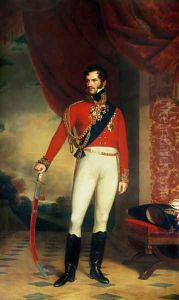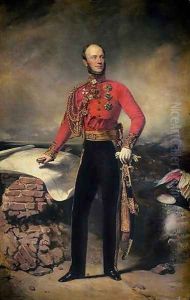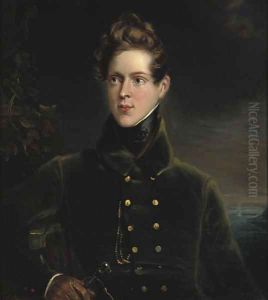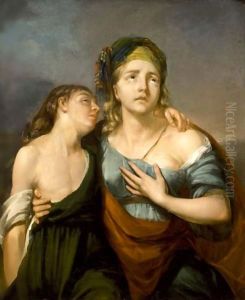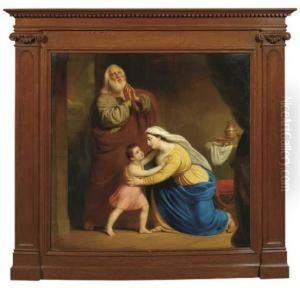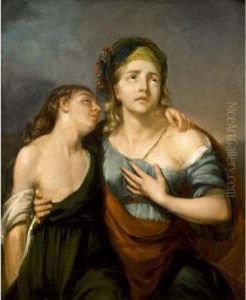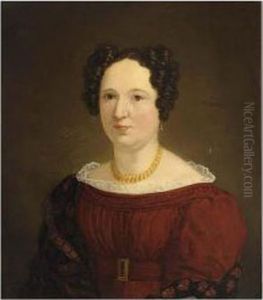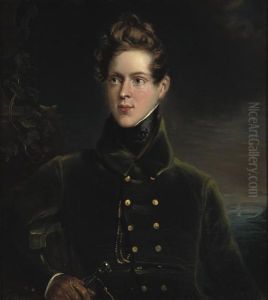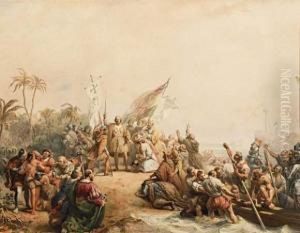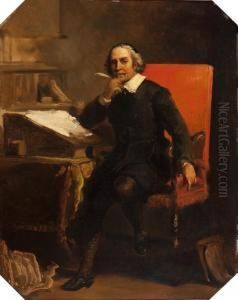Nicholas Pieneman Paintings
Nicolaas Pieneman was a notable Dutch painter and lithographer, born on January 1, 1809, in Amersfoort, Netherlands. He was a prominent figure in the 19th-century Dutch art scene, particularly known for his historical paintings and portraits. Pieneman developed an early interest in art, and his talent was recognized when he was young. He studied under the famous Dutch historical painter Jan Willem Pieneman, who was also his father.
Pieneman's career flourished in the 1830s and 1840s. He became a sought-after portraitist, painting numerous members of the Dutch royal family and other dignitaries. In addition to portraiture, he was passionate about history and frequently depicted significant events in Dutch history through his works. These historical paintings were characterized by their dramatic intensity and fine detail, which reflected Pieneman's academic approach to art.
In 1840, Pieneman was appointed the director of the Royal Academy of Fine Arts in Amsterdam, where he played an influential role in the development of Dutch art education. He also served as the court painter to King William II and King William III. His position allowed him to contribute significantly to state commissions and to participate in the decoration of various royal palaces.
Nicolaas Pieneman's achievements were recognized with several honors throughout his lifetime. He was a member of the Royal Netherlands Academy of Arts and Sciences and received the Order of the Netherlands Lion for his contributions to Dutch art.
Despite his success, Pieneman's style eventually fell out of favor with the advent of modern artistic movements that challenged the academic traditions he upheld. Nevertheless, his works remain an important part of Dutch cultural heritage and are exhibited in various museums across the Netherlands.
Nicolaas Pieneman passed away on December 30, 1860, in Amsterdam. His legacy lives on through his paintings, which continue to be studied and admired for their historical significance and craftsmanship.
